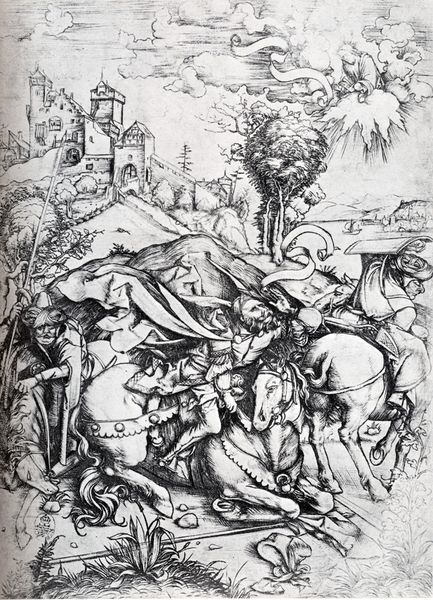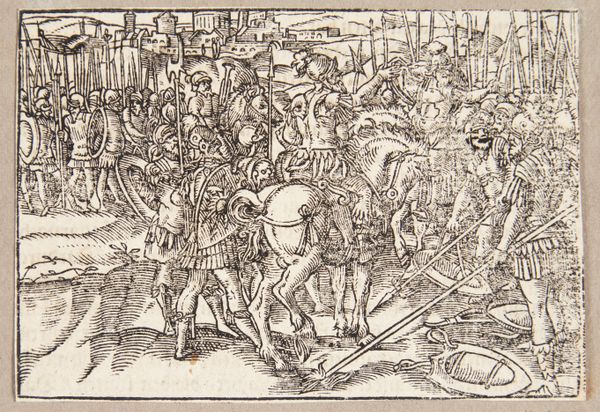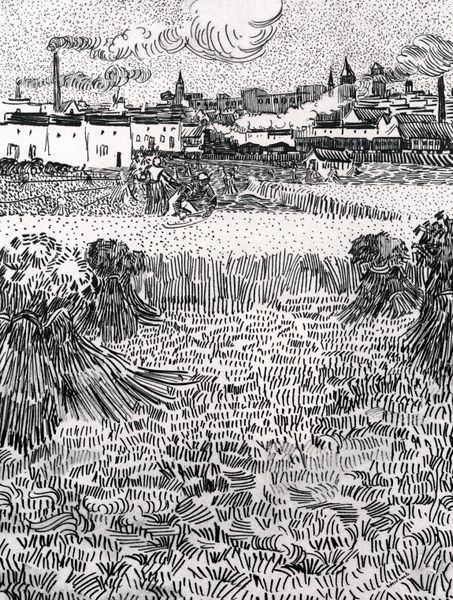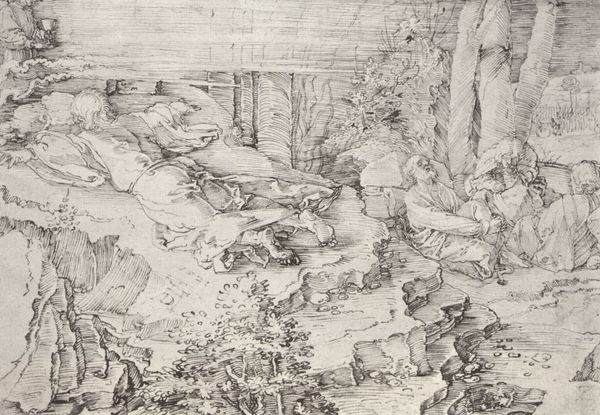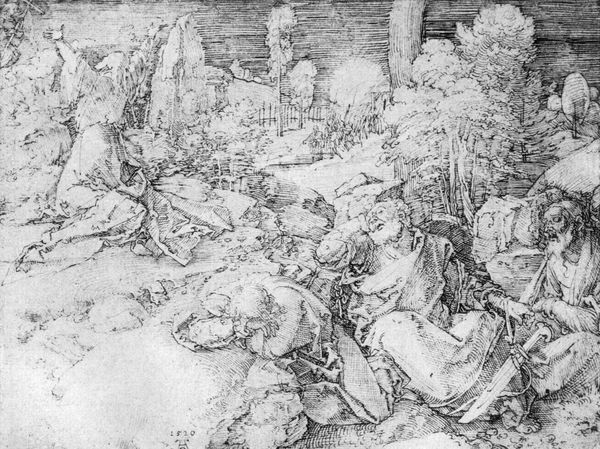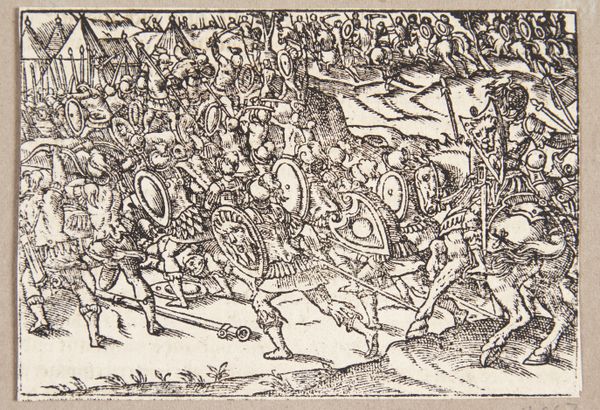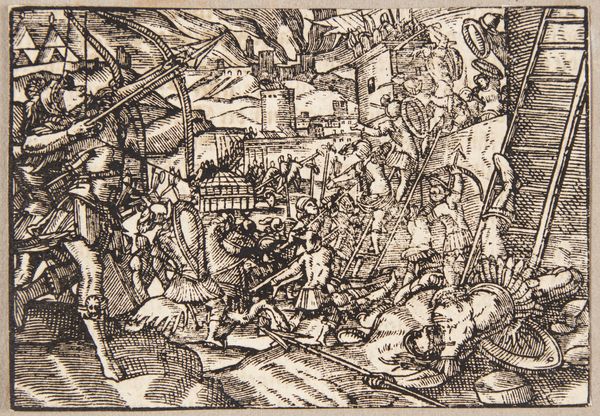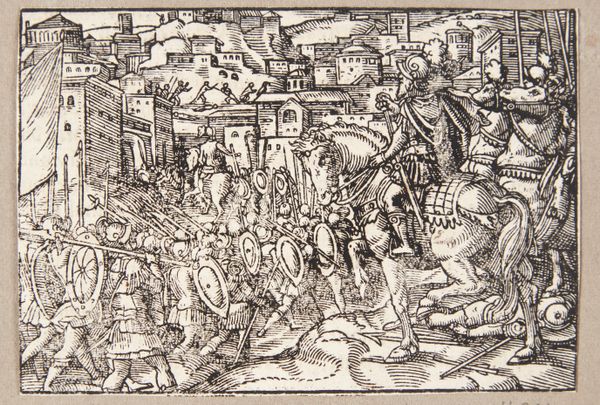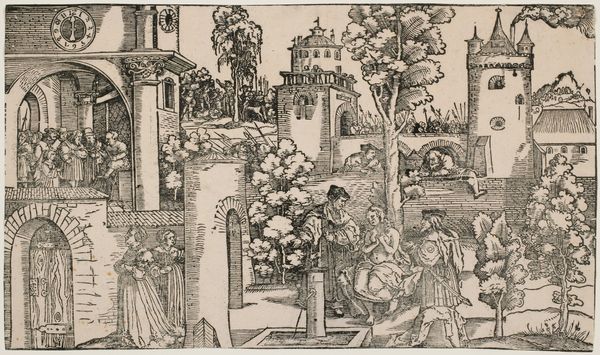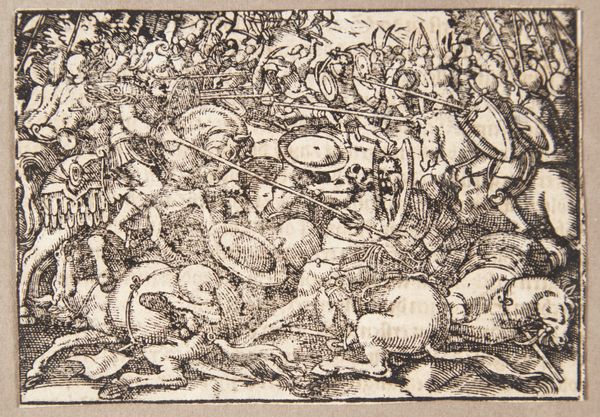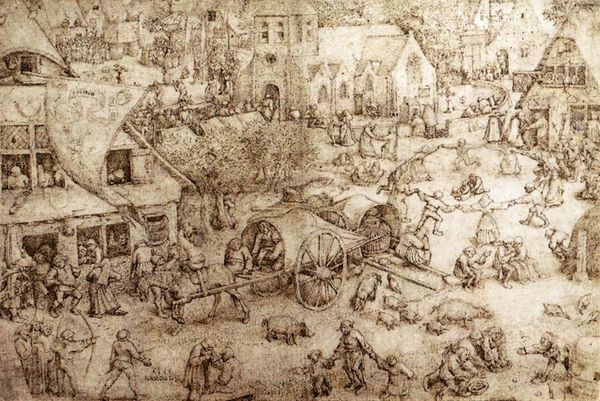
drawing, ink
#
drawing
#
landscape
#
ink
#
post-impressionism
Dimensions: 59 x 45.5 cm
Copyright: Public domain
Curator: Van Gogh's "The Courtyard of the Hospital at Arles," rendered in 1889 with ink on paper, captures a slice of the artist's life during his stay at the asylum. What’s your immediate take on it? Editor: A jumble, honestly. Anxious even. The sharp, frantic lines make it hard to find a still point, which feels fitting for a man in mental turmoil. It almost feels like you need to calm yourself before approaching the piece. Curator: I think that feeling you are referencing has much to do with van Gogh’s rendering of enclosed gardens in asylum settings, and that courtyard imagery traditionally signifies contemplation, here charged with something quite unsettling. Gardens symbolize a return to Eden. What's being presented here might indicate psychological unrest rather than tranquility. Editor: That's astute. Knowing the historical context – his fragile mental state – inevitably colors our perception. Is it possible, however, to separate our knowledge of his biography from the artistic intention? Perhaps he wanted to show the societal pressure in 19th-century institutions by illustrating this courtyard, especially where there is only a select view of what’s outside? Curator: You bring up a great point about societal influence. While Van Gogh's personal experiences undeniably informed his art, his post-impressionistic style challenged the art establishment's idealized depictions by representing reality more emotively than photorealistically. Notice that there are also groups of figures lingering above, looking down, giving a sort of prison-yard vibe to the artwork. Editor: Right, the loose, expressive marks seem designed to break down formal conventions of rendering landscape in his day, and that, too, is part of his message. This goes beyond just observation of an exterior place to portraying his inner state of isolation during times of great uncertainty for individuals in similar asylums during his lifetime. Curator: Exactly. So we see here more than a document of place but an index of being. Editor: Looking at it this way reveals how powerful art can be as social commentary even through what may appear to be straightforward, like that rendering. I wonder what Van Gogh himself might say to our interpretation. Curator: I suppose that mystery is what keeps us returning to engage with such enduring art.
Comments
No comments
Be the first to comment and join the conversation on the ultimate creative platform.
